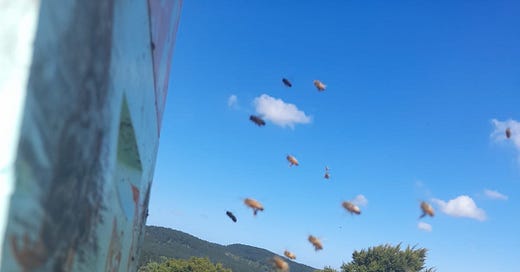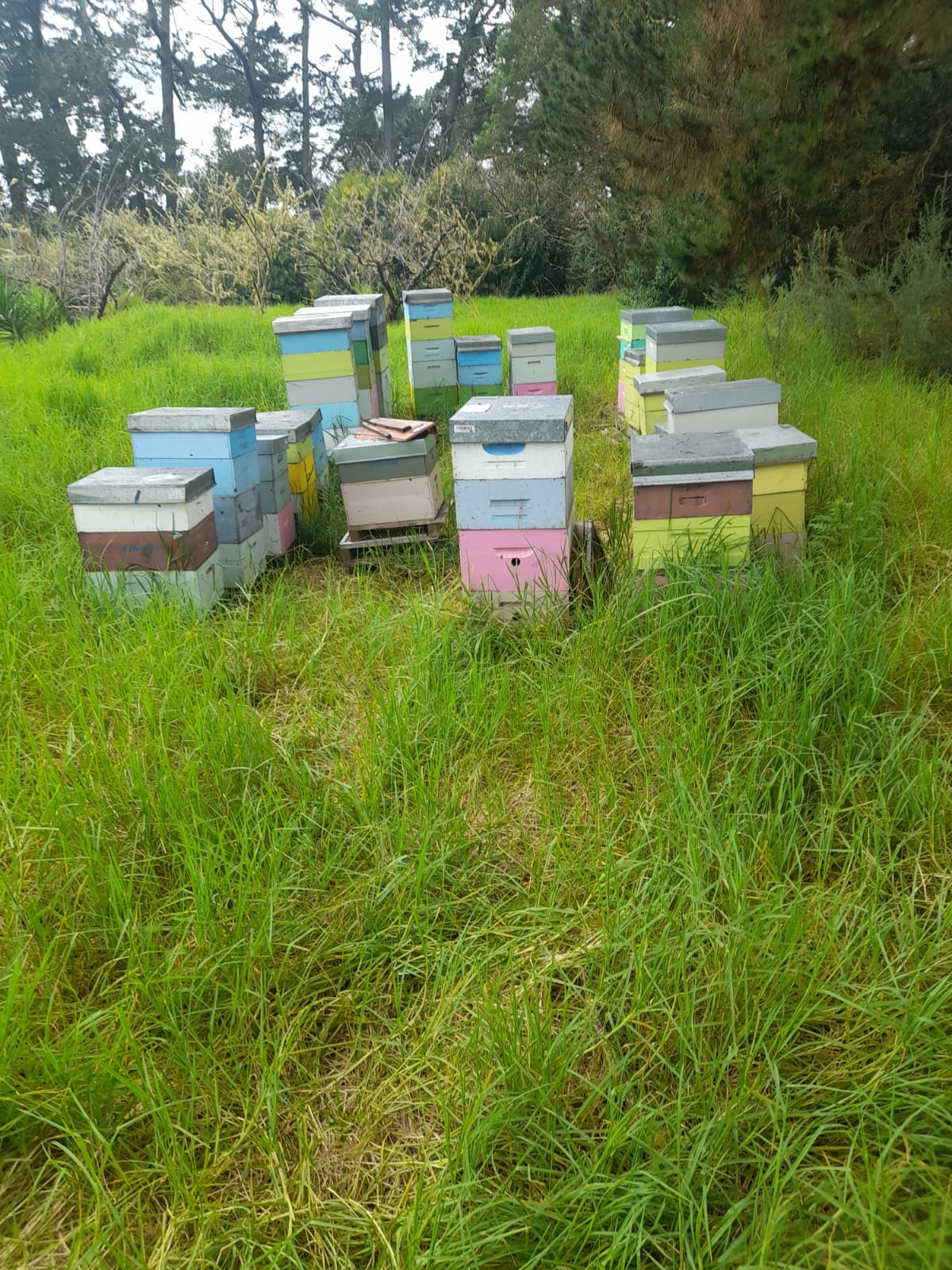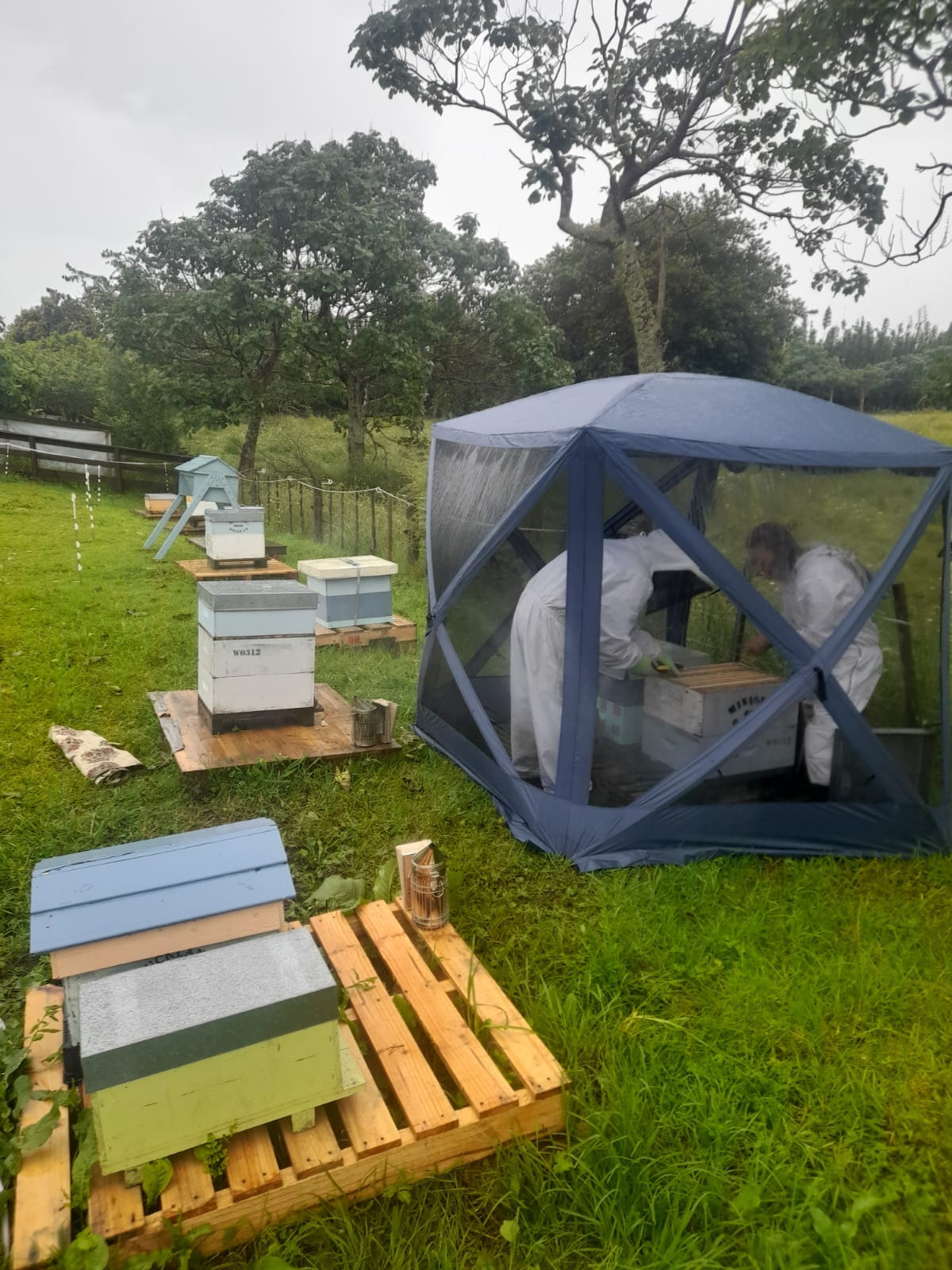Winging their way home
My wife asked me if bees can predict the weather after noticing that there was no activity in the apiary and dark thunderclouds were rolling over the horizon.
Besides the obvious behaviours of clustering and bearding, indicating it is cold or hot respectively, you may have noticed that your bees sometimes forage when it’s raining lightly. Or they go out shortly before it stops and then they’re all indoors before a storm. It turns out that bees are excellent weather forecasters, sometimes even better than NISA. There are many weather-related behaviours that have been observed by researchers – bees become more defensive before certain weather patterns; foragers are more active in the day(s) before a storm; foragers don’t go out immediately before a storm.
Calm before the storm
Bees are sensitive to changes in barometric pressure and combined with changes in wind, air temperature and levels of solar radiation intensity they can judge the likelihood of incoming weather patterns. The air around you has weight, and it presses against everything it touches. This is what we call atmospheric pressure, or air pressure. It is the force exerted on a surface by the air above it as gravity pulls it to Earth. The fine hairs on bees are very sensitive and they can detect these changes in air pressure. Bees have polarised vision and can see ultraviolet light, so can perceive incoming light differently to us. With their evolutionary pressure it is not surprising that bees can anticipate weather better than us.
So, next time you’re in your hive and the foragers are racing back home and they’re all getting a bit tetchier, it may be time to close up quickly before it rains. Maybe have a look at your hive before putting the washing out.
Checking the girls in a gazebo, after its been raining for three weeks and still no sign of let up
Previously published in Auckland Beekeepers’ Club Quarterly Journal






